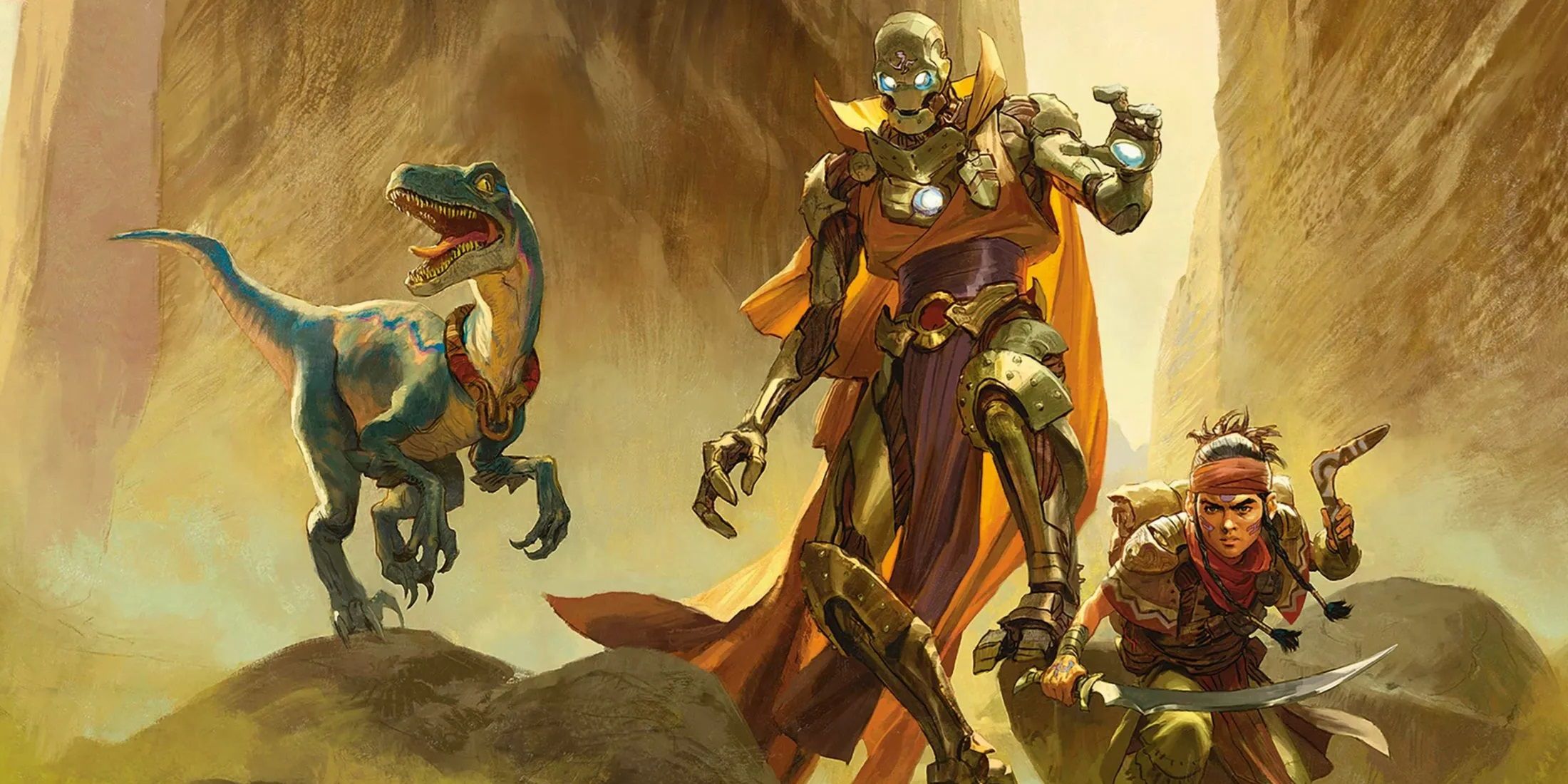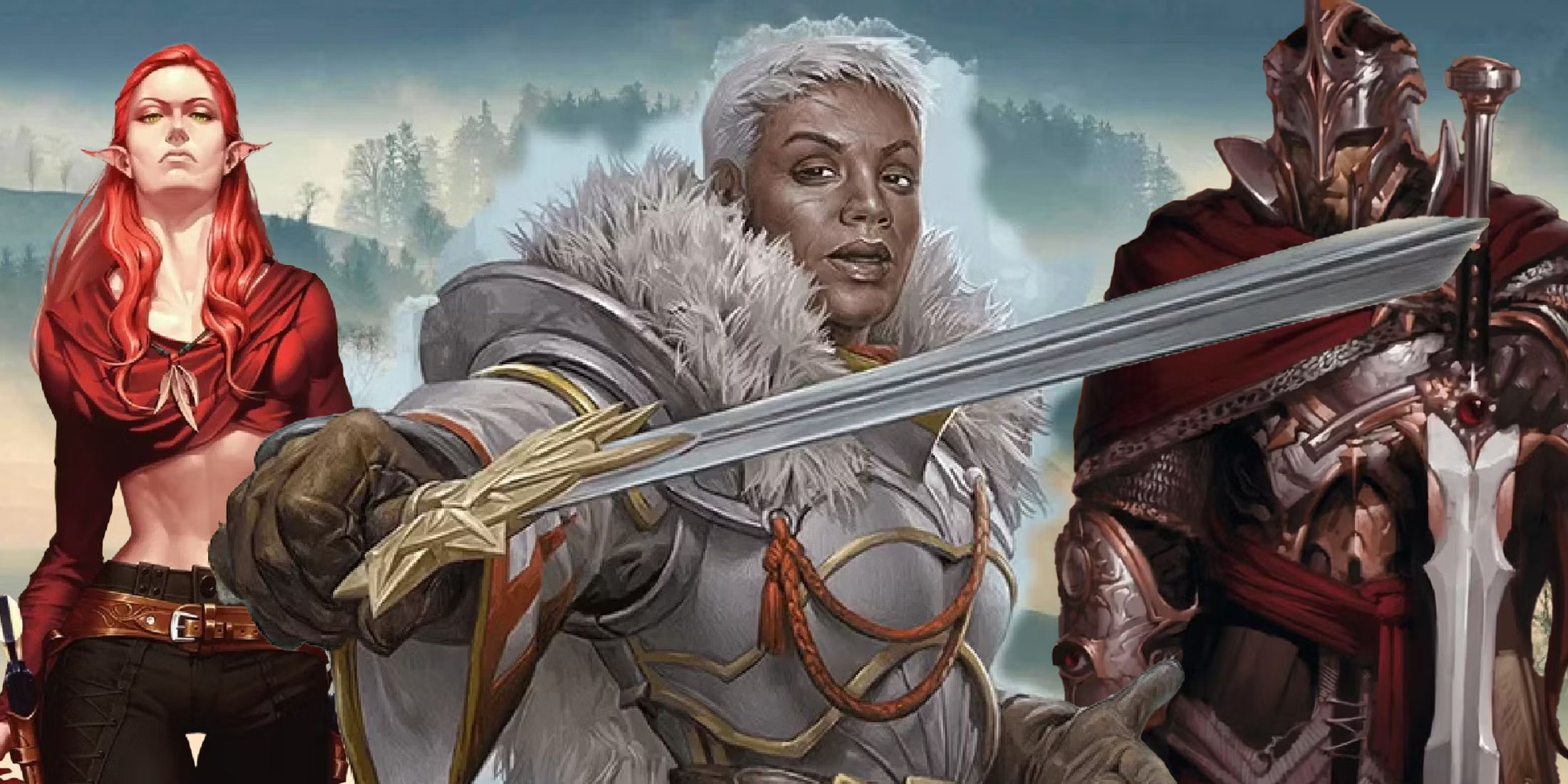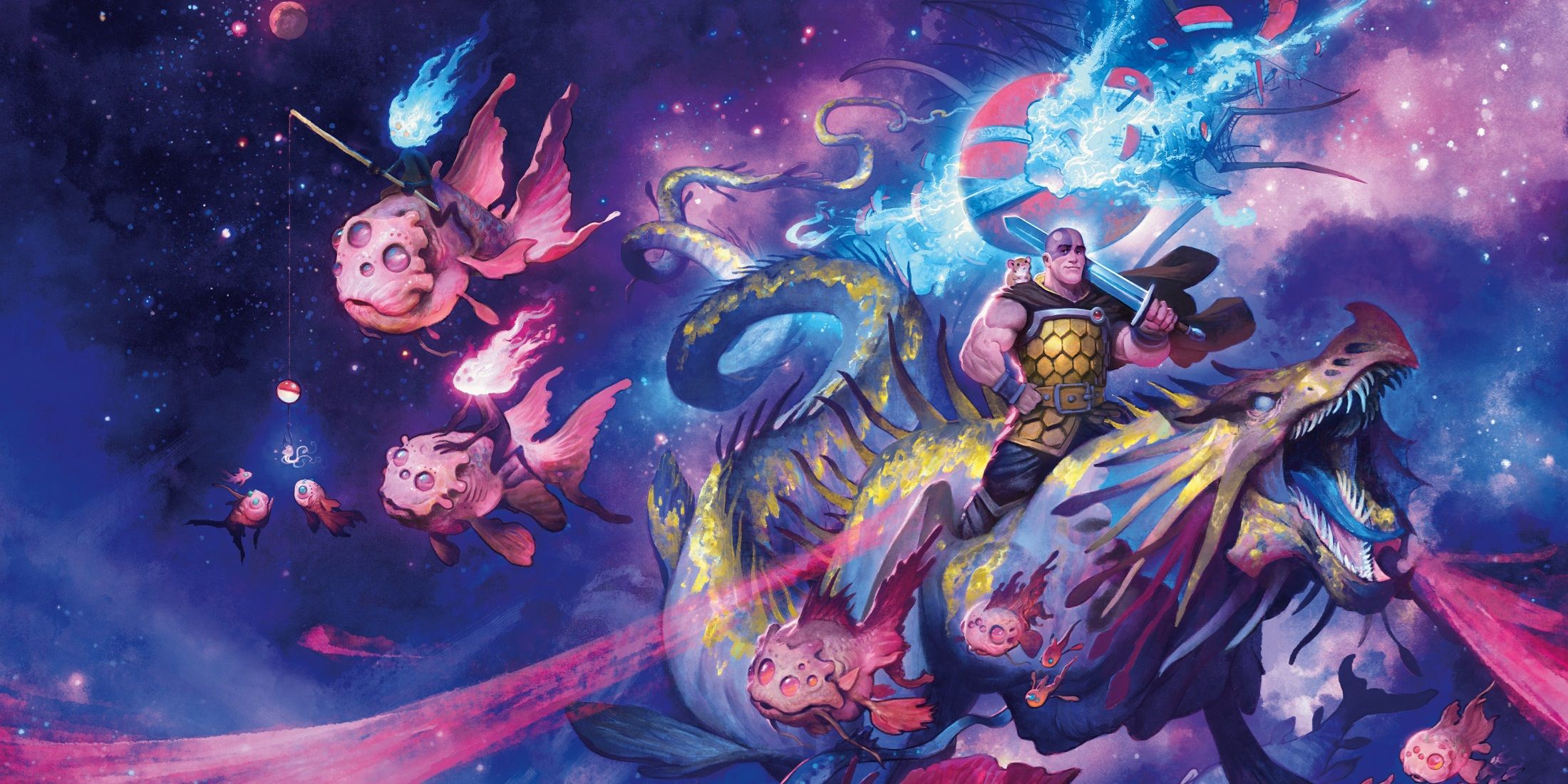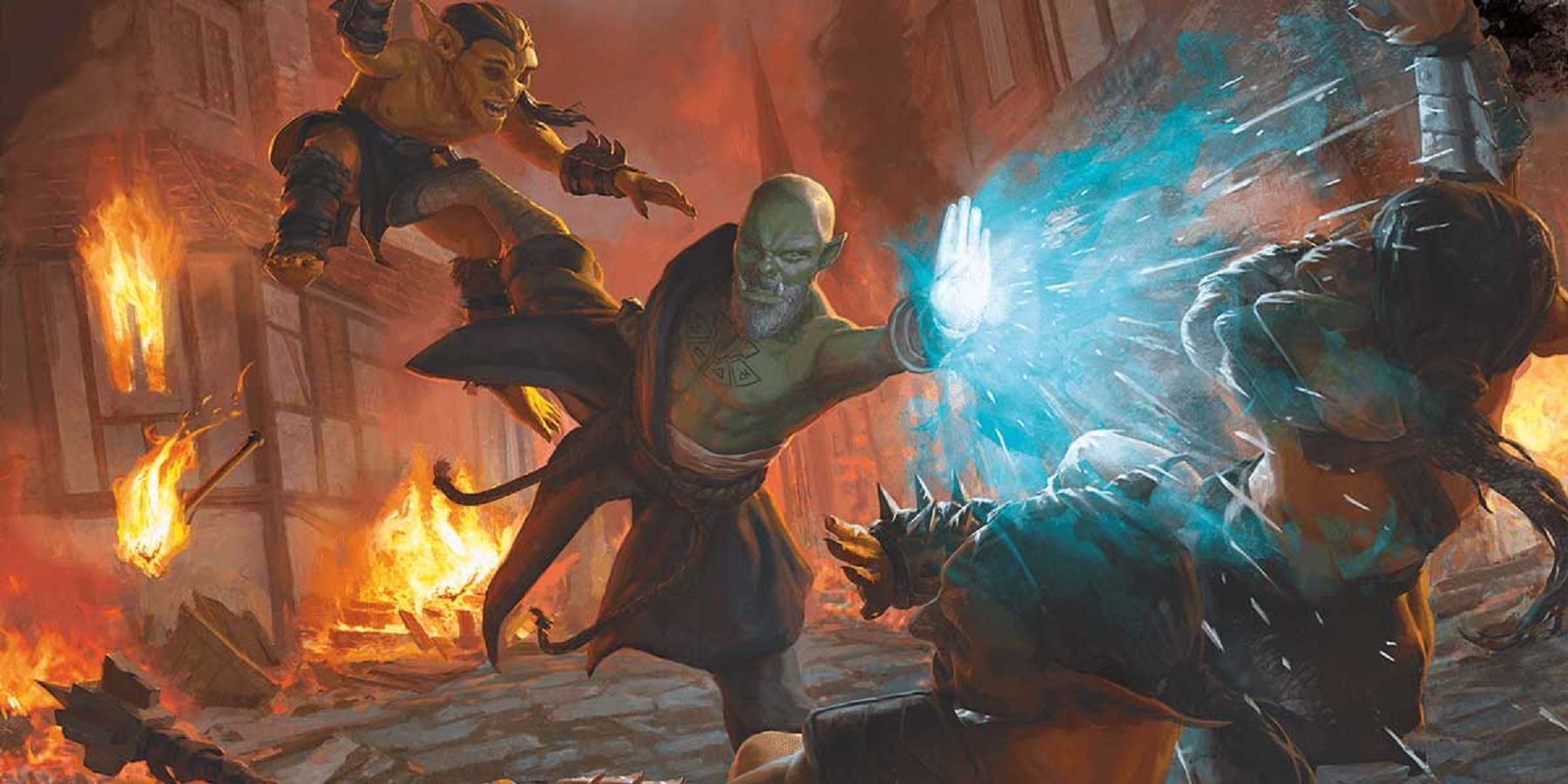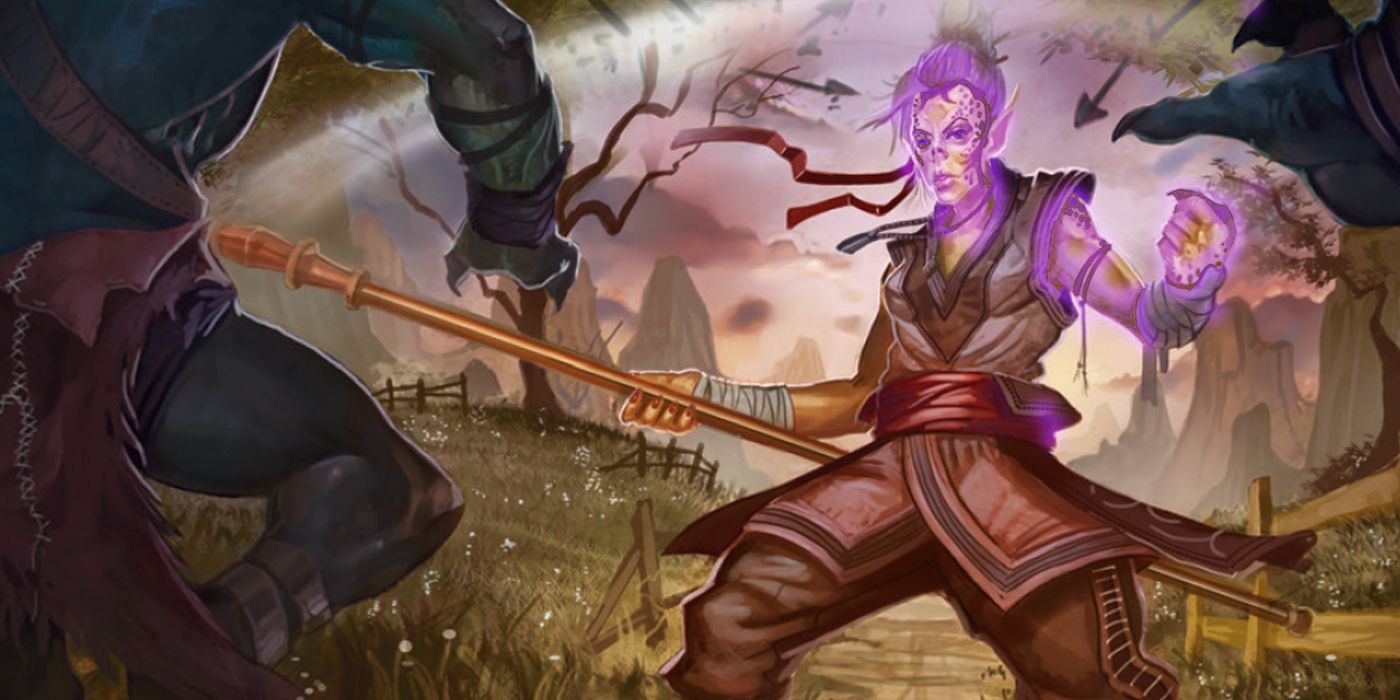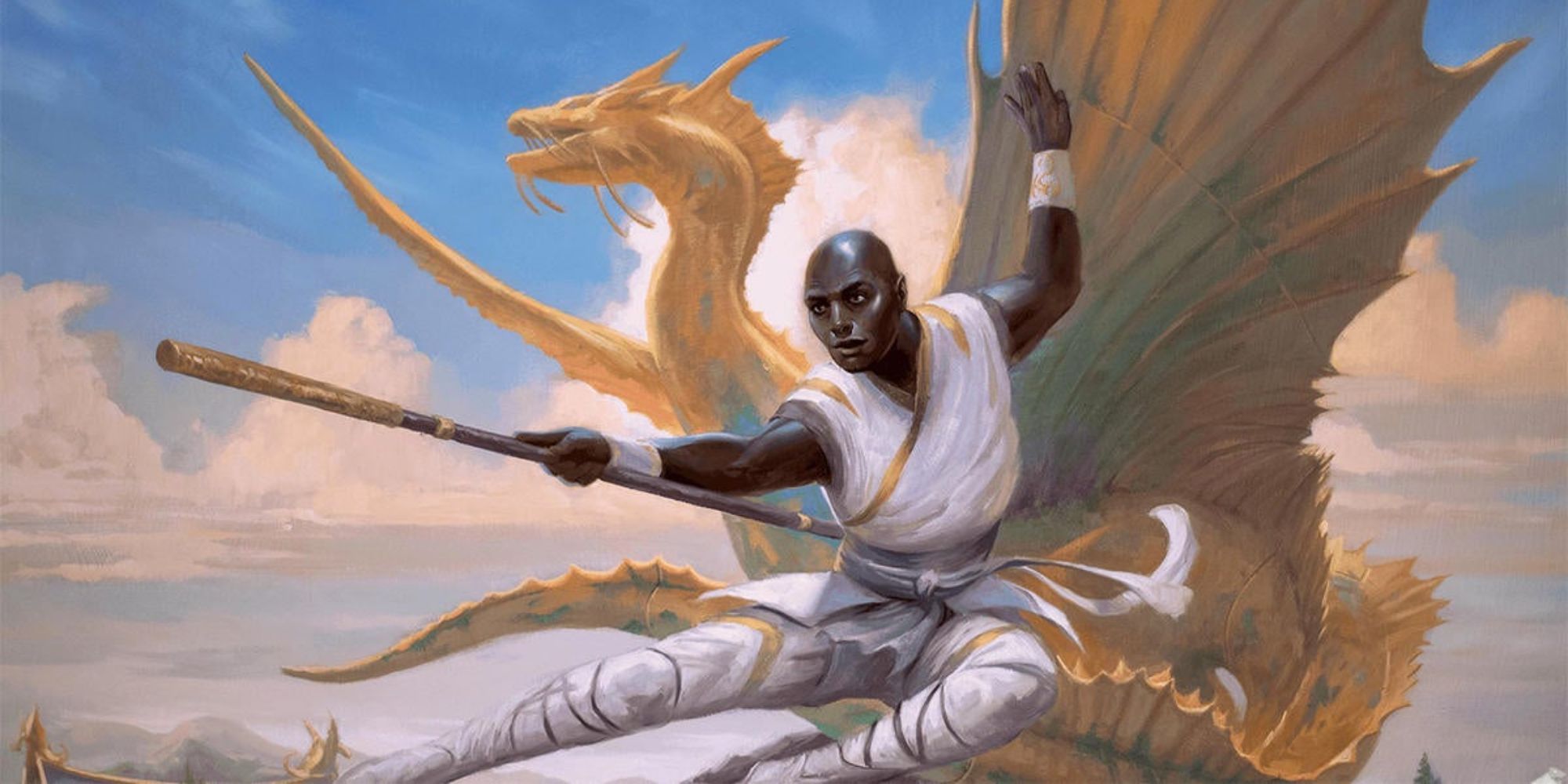The Monk can be an excellent choice for characters in the current edition of Dungeons & Dragons, especially if players are looking for simple choices on weapons and armor. However, that doesn't mean creator Wizards of the Coast can't improve the class when moving from D&D 5E to 6E.
There are a few shortcomings that can be improved upon in the case of the Monk class, some intentionally built for balance and others that were likely never considered in the first place. Beyond some limitations imposed in the current edition of Dungeons & Dragons, the Monk also has a lot of potential when it comes to introducing new subclasses in the form of the Monastic Traditions.
Keep Monks Alive on their Own
One major difficulty when it comes to balancing melee classes like the Monk or even Fighters in Dungeons & Dragons is finding a way for them to work well in a party setting and be able to take on some fights alone. No player wants to be able to take down an Ancient Red Dragon or a Tarrasque on their own, since the comradery of beating these massive monsters together is a major draw to these tabletop adventures. However, smaller occurrences like bar brawls, street muggings, and matches in a coliseum should be achievable without needing an entire party to back up the player.
Monks already have one of the most important aspects of staying alive in solo fights as a part of the base class. That would be the ability to self-heal, which for Monks comes in the form of the Quickened Healing class feature that allows the player to use Ki points to regain hit points. While this feature can help in a bind, the payoff is remarkably low when compared to Dungeons & Dragons' more powerful healing magic. At lower levels it costs half a Monk's Ki to heal less than a quarter of an average character's health, while at higher levels it takes a full action to not even offset the damage likely being taken in tougher fights.
Without adding any new features, the Monk could gain more versatility to stand on its own and start taking minor fights without needing to rely on a party. This shouldn't give the Monk a full-heal to use at any moment, but something that at least has the power to reliably offset the damage taken between turns. Additionally, this could help improve specific Monastic Traditions like Way of Mercy, or even new subclasses pulled from popular homebrews to D&D 5E's Unearthed Arcana.
New Monastic Traditions for Monks
To say that Monks have too few subclasses wouldn't be entirely true, especially when considering the many expansions that have brought new Monastic Traditions to the class. However, there is a more recent subclass for Monks that could lay out a blueprint for how to introduce new traditions when looking for improvements in D&D 6E. Specifically, the Way of the Ascendant Dragon could pave the way for a host of subclasses based around primal beasts or impressive monsters.
It's no wonder that a game with "dragons" in its title would emphasize turning players into dragons in certain forms, from the Dragonborne race to the Draconic Bloodline among options for D&D's Sorcerers. That being said, there are other monster classes from Dungeons & Dragons lore that could act as the backbone for a proper Monk subclass in the same way. Fey or Celestial creatures have a similar etherealness that could work with the way Ki functions for a Monk to channel energies from the world.
Introducing new Monastic Traditions that focus on these other types of creatures the way that Way of the Ascendant Dragon does could make Monks an incredibly versatile class. This doesn't have to be limited to benevolent figures, as a Way of Fiends could make for an incredibly compelling evil Monk that uses abilities drawn from Pit Fiends, Mind Flayers, and Beholders. In most cases, the best ways that Wizards of the Coast could move D&D forward with 6E is by expanding the options players have for customization. Whether that be through drawing inspiration from popular Homebrew classes or expanding on established subclasses and archetypes, these extra options would help to improve the uniqueness of each player's experience.
Dungeons & Dragons 5E is available now.

